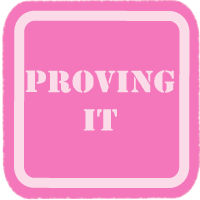
 Oral Comprehension (listening) in the SL Classroom
Oral Comprehension (listening) in the SL Classroom
 |
What is overlooked when we ask ‘do you speak such and such a language?’ Communication implies interacting with others which involves not only speaking, but listening too. That is why listening, or oral comprehension, is included as one of the branches of the Tree. Language teachers often experience difficulty in trying to improve their students’ listening skills, especially in a ‘Foreign Language’ context since learners are not exposed to the language outside of the classroom. We address this topic in this section of the web-site. |
What role does listening comprehension play in communication?
Listening comprehension is a key initial step in communication. The better a student can understand what is being said, the better will be their ability to communicate. In addition, they will be better able to notice the characteristics of the target language which will help improve their language development in all four key skill areas.
Students may feel a great deal of pride when they are able to comprehend something in the target language. This can be a great motivating factor in continuing to learn the language, and teachers should do whatever possible to promote this sense of accomplishment. Consequently, teachers need to construct learning activities which will enhance learners' oral comprehension (listening skills) and motivate them, as well.
The work of Nunan and Lamb (1996) is a great help in this area. They outline a series of questions which teachers need to consider when preparing listening activities:
- What is the context for listening?
- Should one or two items from the listening exercises be modeled for the whole class so that learners know what to do?
- How many times should the item be heard by students?
- How will learners check the accuracy of their listening? (that is, the students’ answers?)
- Is it possible to check listening accuracy to be done independently or collaboratively?
back to top
What are some tips to help teachers develop students’ listening skills?
An effective teacher is aware that students are not always able to develop oral comprehension skills on their own; without additional supports listening, by itself, is not enough to develop better listening skills. Here are several activities a teacher can employ to facilitate the development of listening skills.
- Promote active listening: Giving the students something to listen for ensures that they are involved in the task. Exercise sheets are another tool that promote active listening;
- Identify listening strategies: Give the students tools to guide their listening; such as, looking for specific information, identifying predictable words or phrases, or discussing what they expect in certain forms of speech; such as, newscasts or advertisements.;
- Selecting the most appropriate strategy for presenting the lesson; for example, using a top down (general meaning, summarizing) or bottom up (cognates, specific words, word order patterns) approach;
- Allow the students to hear as much of the target language as possible while using a variety of teaching methods; for example, sometimes using visual cues, at other times not;
- Use authentic materials; for example, a lecture or a radio announcement in the target language, to help students become accustomed to different accents and to a realistic pace of speech;
- Ensure the students know the goals of the listening task: is the goal to understand what’s being said, to decide whether to keep listening or to obtain specific information?
- Provide opportunities for reflection and discussion so the students can share what was heard, what was learned and methods they employed to better understand what was said;
- Organize pre-listening activities, such as providing students with relevant vocabulary, reading a related text, looking at a related image or clarifying necessary cultural information etc.;
- Be sure to check level of the listening exercise beforehand to ensure it is an appropriate level for the students.
Information taken from Goals and Techniques for Teaching Listening, Strategies for Developing Listening Skills and Developing Listening Activities
back to top
What are some examples of listening activities to use in the SL classroom?
Here are some listening activities to use with students; they range from semi-guided tasks to unstructured tasks.
Semi-Guided Tasks (teacher may prompt with questions)
|
Unstructured Tasks
There are several advantages to this activity. The recordings allow participants to hear themselves speak in the target language, which can be very helpful for shy learners. Students view this as an easier form of homework than a written assignment which will motivate the student to complete the task. |
Pre-Listening and While-Listening Activities Example: |
Selective Listening
|
Other Listening Activities
a. Simon Says
b. True-False: each student has a card – on one side of the card the word ‘yes’ is written, on the flip side ‘no’ (in the target language, of course); students hold up the appropriate card in response to the teacher's questions. This exercise can also be done using hand signals instead: thumbs up or down, or using one’s left or right hand to indicate yes or no.
c. Sound identification game: students make a consonant or vowel fan, which is a series of paper strips with one letter or combination of letters at the end of each paper. The teacher points to a picture of a word and the students use the fan to indicate which letter the word begins with.
d. Three Card game: Each student receives three cards with words or pictures written/drawn on them; for example, card #1 may say south, card #2 may say Friday, and #3 may say Spring. The teacher asks oral questions and the students hold up the appropriate card in response. For example, the teacher says ‘I want the card that is the name of a season’.
back to top









